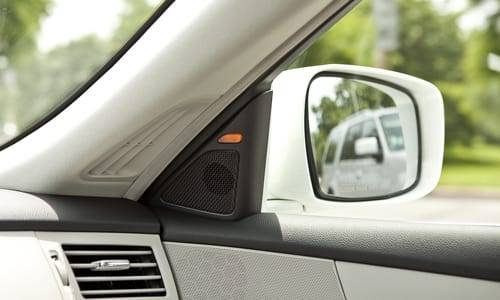NHTSA Revamps Five-Star Safety Ratings


&&&&&EMBEDDED_ELEMENT_START&&&&& {“id”:1420668673271,”originalName”:”2015_03_04_17_02_12_023_http___blogs_cars_com__a_6a00d83451b3c669e20133f4c72b8f970b_800wi”,”name”:”MMS ID 48825 (created by CM Utility)”,”URI”:”/63/1102211396-1425510132663.”,”createDate”:”2015-03-04 05:02:12″,”metadata”:{“AUTHOR”:”automatic-content-migration”,”KEYWORDS”:””},”href”:”https://www.cstatic-images.com/stock/1170×1170/63/1102211396-1425510132663.”,”description”:”Came from http://blogs.cars.com/.a/6a00d83451b3c669e20133f4c72b8f970b-800wi”,”externalid”:”48825″,”updatedby”:”cmuadmin”,”updateddate”:1425511468163,”associations”:{}} &&&&&EMBEDDED_ELEMENT_END&&&&&
Side Pole Test
The pole test, which simulates a car sliding sideways into a tree or post, can reveal weaknesses that aren’t reflected in the traditional barrier test, in which the test car is T-boned by a sled that’s roughly the weight and height of a midsize sedan. The new NCAP combines both tests’ results into a single side rating.
Head injuries from both side tests now factor into the star rating. The previous program recorded head acceleration but didn’t include the results in the star ratings — one of Cars.com’s greatest objections. Side-impact collisions are more likely than frontal crashes to cause head injuries, which are among the most dangerous and potentially fatal. (In previous NCAP tests, head-acceleration data could earn a vehicle the “safety concern” citation, but it’s too easy to glance at a star rating and think a vehicle’s score is acceptable.)
New Dummies, More Data
The program’s new crash-test dummies cover a wider range of sizes, and all of them collect more data than their forebears did. This gives a clearer picture of the trauma occupants experience in a collision, so the vehicles whose star ratings are substantially lower may have uncovered weaknesses the previous dummies didn’t, according to NHTSA.
What Hasn’t Changed
NCAP rollover ratings remain unchanged along with the methodology.
As before, the rollover rating estimates a vehicle’s propensity to roll over, not the protection it provides when a rollover occurs. The star rating is based on a calculation of the vehicle’s dimensions and center of gravity. The test subjects vehicles to a panic maneuver and reports whether it raises two wheels off the ground. The results supplement the star rating with a “tip” or “no-tip” notation.
NHTSA vs. IIHS
How does the new government testing array compare against those from the Insurance Institute for Highway Safety? When you see the scores on Tuesday you’ll get some stark contrasts. The difference in ratings come down to the types of tests and how they’re conducted by the two groups.
The new NCAP pole test is one IIHS doesn’t conduct. In the side barrier test, the NCAP sled that’s used to ram test vehicles is roughly the height and weight of a midsize car. IIHS’ version emulates a full-size pickup truck.
The NCAP frontal crash test runs a vehicle into a solid wall, mimicking a direct head-on collision. This is less realistic, or at least less common, than the type of crash represented in the IIHS test. The IIHS barrier is deformable — to emulate another vehicle — and engages one-half of the test vehicle’s front end rather than its entire width. Though this test is arguably more real-world, the NCAP frontal test isn’t without merit. Because it’s a different type of collision, it provides different information than the IIHS test, and both are useful in determining a car’s crashworthiness. The same can be said of the other differences in methodology.
NCAP’s rollover rating predicts the likelihood that a vehicle will roll over; IIHS’ roof-strength test estimates how much protection it will provide if it does happen. Both organizations have historically stated that they consider their work complementary, not contradictory.


Former Executive Editor Joe Wiesenfelder, a Cars.com launch veteran, led the car evaluation effort. He owns a 1984 Mercedes 300D and a 2002 Mazda Miata SE.
Featured stories



